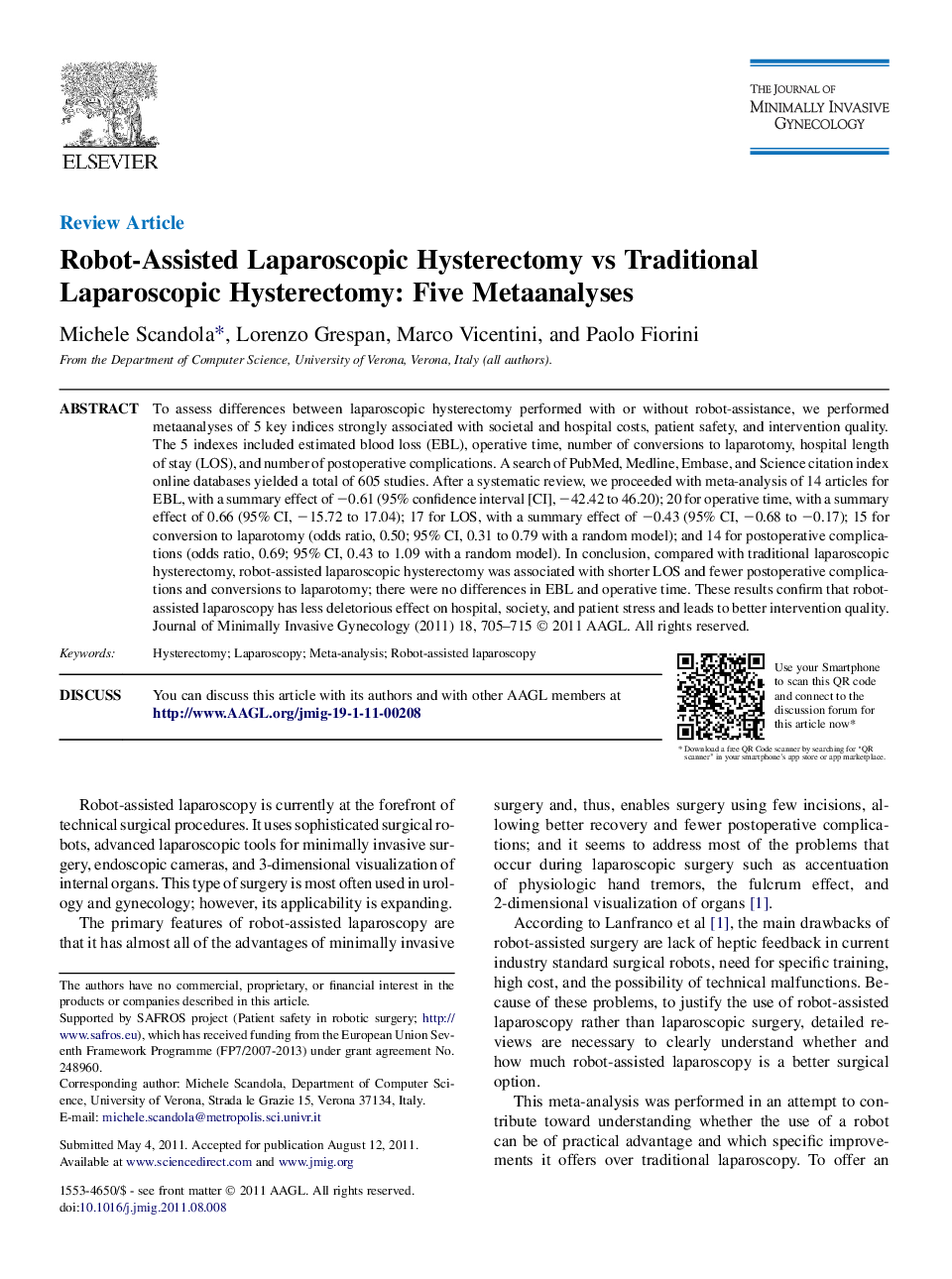| Article ID | Journal | Published Year | Pages | File Type |
|---|---|---|---|---|
| 3962158 | Journal of Minimally Invasive Gynecology | 2011 | 11 Pages |
To assess differences between laparoscopic hysterectomy performed with or without robot-assistance, we performed metaanalyses of 5 key indices strongly associated with societal and hospital costs, patient safety, and intervention quality. The 5 indexes included estimated blood loss (EBL), operative time, number of conversions to laparotomy, hospital length of stay (LOS), and number of postoperative complications. A search of PubMed, Medline, Embase, and Science citation index online databases yielded a total of 605 studies. After a systematic review, we proceeded with meta-analysis of 14 articles for EBL, with a summary effect of −0.61 (95% confidence interval [CI], −42.42 to 46.20); 20 for operative time, with a summary effect of 0.66 (95% CI, −15.72 to 17.04); 17 for LOS, with a summary effect of −0.43 (95% CI, −0.68 to −0.17); 15 for conversion to laparotomy (odds ratio, 0.50; 95% CI, 0.31 to 0.79 with a random model); and 14 for postoperative complications (odds ratio, 0.69; 95% CI, 0.43 to 1.09 with a random model). In conclusion, compared with traditional laparoscopic hysterectomy, robot-assisted laparoscopic hysterectomy was associated with shorter LOS and fewer postoperative complications and conversions to laparotomy; there were no differences in EBL and operative time. These results confirm that robot-assisted laparoscopy has less deletorious effect on hospital, society, and patient stress and leads to better intervention quality.
